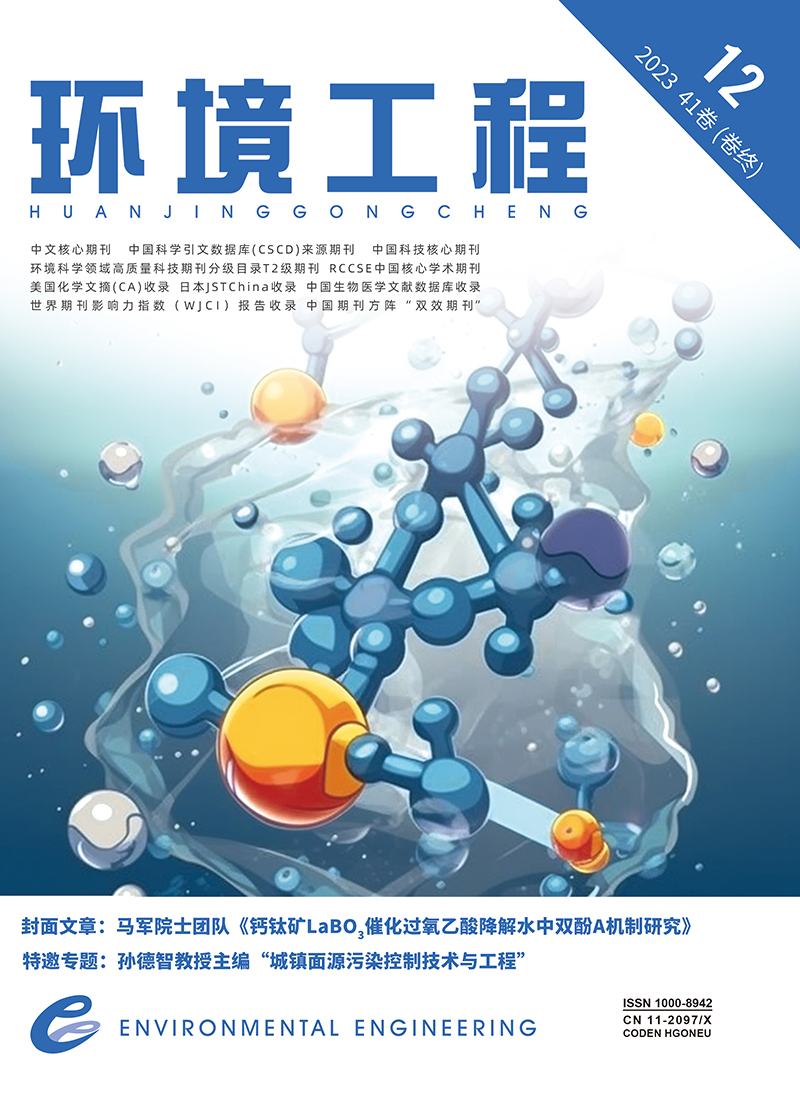| [1] |
邓瑜兵,刘斌,郑俊鹏,等.生态保护红线分区及管控研究综述[J].国土资源导刊,2022,19(3):1-4.
|
| [2] |
DEARDEN P, BENNETT M, JOHNSTON J. Trends in global protected area governance, 1992—2002[J]. Environmental Management, 2005, 36(1): 89-100.
|
| [3] |
LEVERINGTON F, COSTA K L, PAVESE H, et al. A global analysis of protected area management effectiveness[J]. Environmental Management, 2010, 46(5): 685-698.
|
| [4] |
SANG W G, AXMACHER J C. China draws lines to green future[J]. Nature, 2016, 531(7594): 305.
|
| [5] |
孙敏华,姜翠玲,张鹏,等.太湖流域梁塘河沉积物重金属生态风险评价[J].环境工程,2015,33(8):118-122.
|
| [6] |
郭凡嫡,潘俊,孙丽娜,等.辽河干流河岸带土壤中多环芳烃的污染特征与生态风险评价研究[J].环境工程,2018,36(7):155-160.
|
| [7] |
黄诗曼,胡庆武,李海东,等.基于RS和GIS的峨眉山风景区生态风险评价[J].环境科学研究,2020,33(12):2745-2751.
|
| [8] |
刘世梁, 刘芦萌, 武雪, 等. 区域生态效应研究中人类活动强度定量化评价[J]. 生态学报, 2018, 38(19): 6797-6809.
|
| [9] |
王洁,摆万奇,田国行.土地利用生态风险评价研究进展[J].自然资源学报,2020,35(3):576-585.
|
| [10] |
刘影,李丹,何蕾,等.赣南地区农业生态系统脆弱性评价及驱动力分析[J].江西师范大学学报(哲学社会科学版),2016,49(3):72-79.
|
| [11] |
张嘉楠. 基于SPCA的长治市生态脆弱性评价[D].北京:中国地质大学(北京),2021.
|
| [12] |
徐志刚, 庄大方, 杨琳. 区域人类活动强度定量模型的建立与应用[J]. 地球信息科学学报, 2009, 11(4): 452-460.
|
| [13] |
解若璠, 沈永明, 劳桦. 基于人为干扰度的盐城滨海湿地景观格局动态变化及响应[J]. 生态学杂志, 2022, 41(2): 351-360.
|
| [14] |
侯伟,翟亮,田莉,等.基于PSR模型的景观人为干扰度综合分析:以北京市为例[J]. 地理与地理信息科学, 2019, 35(6): 90-96.
|
| [15] |
尚国琲,马景涛,刘雨博,等.基于人类活动强度的生态保护红线优化研究[J].河北省科学院学报,2022,39(4):69-78.
|
| [16] |
高吉喜, 蔡明勇, 申文明, 等. 大尺度生态干扰风险评估技术方法及应用研究[J]. 中国环境科学, 2021, 41(11): 5274-5281.
|
| [17] |
程建龙,陆兆华,范英宏.露天煤矿区生态风险评价方法[J].生态学报,2004,24(12): 2945-2950.
|
| [18] |
马喜君,常志华,程建龙,等.阜新露天煤矿区生态风险分析[J].中国矿业, 2006(8):19-21,45.
|
| [19] |
何云川. 基于贝叶斯网络的太湖叶绿素建模及预测[D].徐州:中国矿业大学, 2022.
|
| [20] |
骆琳. 基于层次贝叶斯模型的成渝地区双城经济圈雾霾监测影响因素分析[D].重庆:重庆工商大学, 2022.
|
| [21] |
倪玲玲,王栋,王远坤,等.基于贝叶斯方法的太湖沉积物多环芳烃的生态风险评价[J].南京大学学报(自然科学),2017,53(5):871-878.
|
| [22] |
高沁怡,潘春霞,刘强,等.基于贝叶斯网络的林业碳汇项目风险评价[J].南京林业大学学报(自然科学版),2021,45(4):210-218.
|
| [23] |
袁德奎,姚鹏辉,徐晓甫,等.基于贝叶斯网络的渤海湾水体富营养化模型[J].天津大学学报(自然科学与工程技术版),2016,49(3):320-325.
|
| [24] |
罗建男,卢文喜,陈社明,等.基于贝叶斯网络的水环境管理研究[J].节水灌溉,2011(3):68-72.
|
| [25] |
李超群.基于贝叶斯网络对全国PM2.5浓度影响因素分析[J].科技创新与应用,2020(22):1-5,9.
|
| [26] |
危小建,谢亚娟,孙显星.基于空间贝叶斯识别城市扩张与生态保护潜在的兼容区和冲突区:以鄱阳湖生态经济区为例[J].长江流域资源与环境,2020,29(2):310-321.
|
| [27] |
赵欣胜,崔丽娟,李伟,等.人类活动对辽宁双台河口湿地生态系统影响评价[J].水利水电技术,2017,48(9):16-23.
|
| [28] |
泰州市自然资源和规划局.泰州市矿产资源总体规划(2016—2020年)[R].2017.
|
| [29] |
泰州市统计局.泰州统计年鉴2021[M].北京:方志出版社,2021.
|
| [30] |
吴楠,陈红枫,匡丕东,等.生态保护红线区干扰退化风险评价:以安徽省为例[J].生态学报, 2020, 40(16): 5571-5578.
|
| [31] |
吴健生,毛家颖,林倩,等.基于生境质量的城市增长边界研究:以长三角地区为例[J].地理科学,2017,37(1):28-36.
|
| [32] |
韩继冲,郭梦迪,杨青林,等.川西北江河源区生态环境脆弱性评价[J].湖北农业科学,2018,57(9):20-24.
|
| [33] |
杨湘艳,余静.基于贝叶斯网络的海洋生态环境状况评价:以山东省为例[J].海洋通报,2021,40(4):473-480.
|
| [34] |
赵晓光,张亦扬,杜华栋.陕北矿区不同土地类型下土壤重金属污染评价[J].环境工程,2019,37(9):188-193.
|
| [35] |
张新胜,蔡明勇,邰文飞,等.陕西秦岭地区生态干扰风险空间分异规律研究[J].水土保持研究,2023,30(4):115-121
,129.
|
| [36] |
武建超,任博文,刘少波.秦岭北麓生态复生技术研究[J].科学技术创新,2020(32):189-190.
|


 Login
Login Register
Register E-alert
E-alert






 DownLoad:
DownLoad: